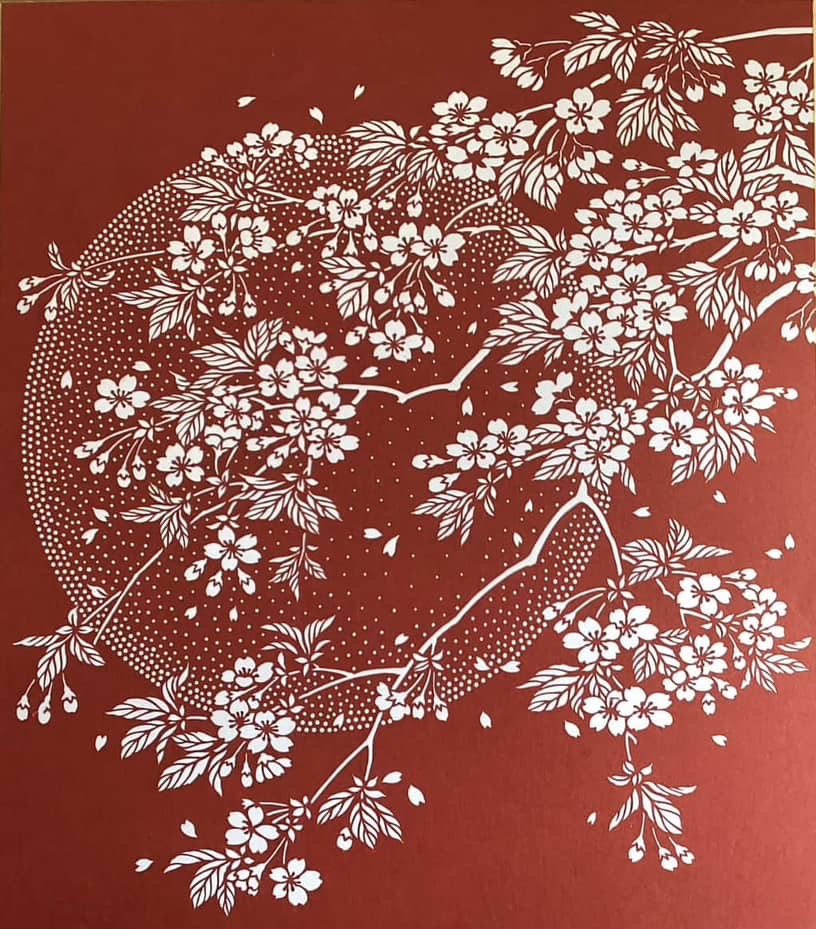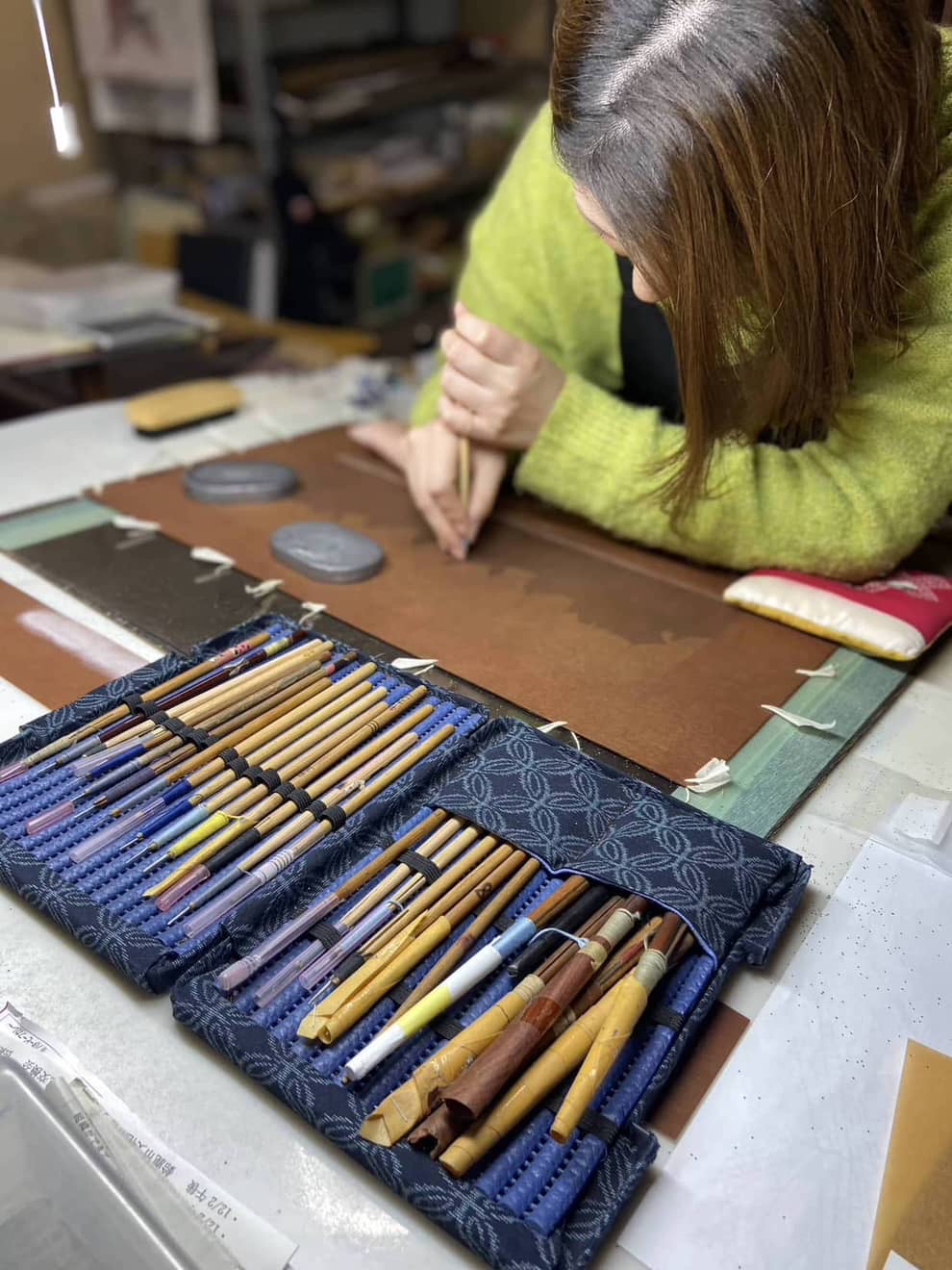
It was just over a year ago when I first encountered Ise-katagami.
After discovering the allure of Japanese paper, washi, I began exploring artworks online from abroad. It was during this exploration that I stumbled upon Ise-katagami. I was captivated by its intricate expression.
Even through the screen, I could sense the grandeur of its techniques.
The patterns and shapes remained immaculate. I believe it takes immense concentration to meticulously carve each one by hand, showcasing the artisan’s skill and precision. I feel that the exquisite accuracy of the craftsmanship is a hallmark of Japanese artistry.
Finally, my desire has been fulfilled.
I have been warming up to the idea of seeing Isekatagami with my own eyes. I boarded the Shinkansen from my home in Tokyo to Nagoya, then transferred to the Kintetsu Line. After approximately three and a half hours of travel, I reached Shirako Station in Suzuka City, Mie Prefecture.
At the tourist information center in front of Shirako Station, I rented a bicycle for 500 yen and set off for the Ise Katagami Museum.
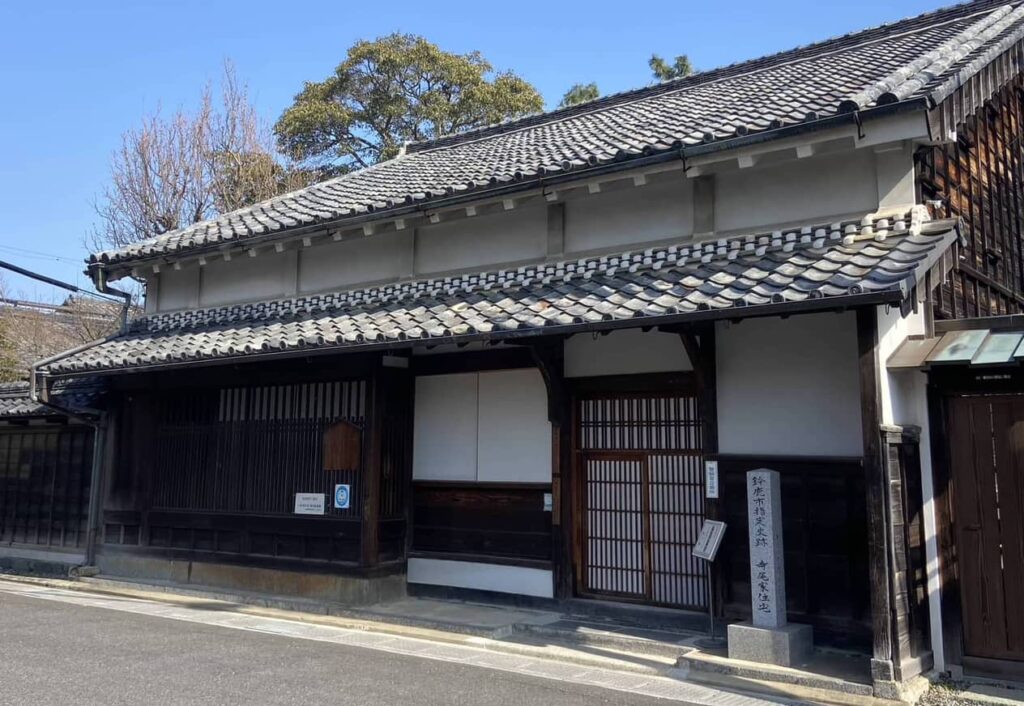
As I pushed open the weighty, sturdy gate, I was greeted by a traditional earthen floor adorned with several kamados. The building, constructed at the end of the Edo period (1603-1868), had once served as the residence of the Terao family. As wholesalers of katagami, the Terao family conducted trade across various regions, including the Tohoku region and the Kanto area.
In the main house, works by professionals and students were on display. To an amateur like myself, I could not tell the difference between the two. But I could tell that there were many wonderful works of art on display.
Upon exiting the main building, I encountered a collection of aged Ise-katagami stored in the warehouse. These artifacts, presumably preserved by the Terao family, were particularly striking. The patterned paper stencils were meticulously detailed, requiring a magnifying glass to fully appreciate their intricacy.
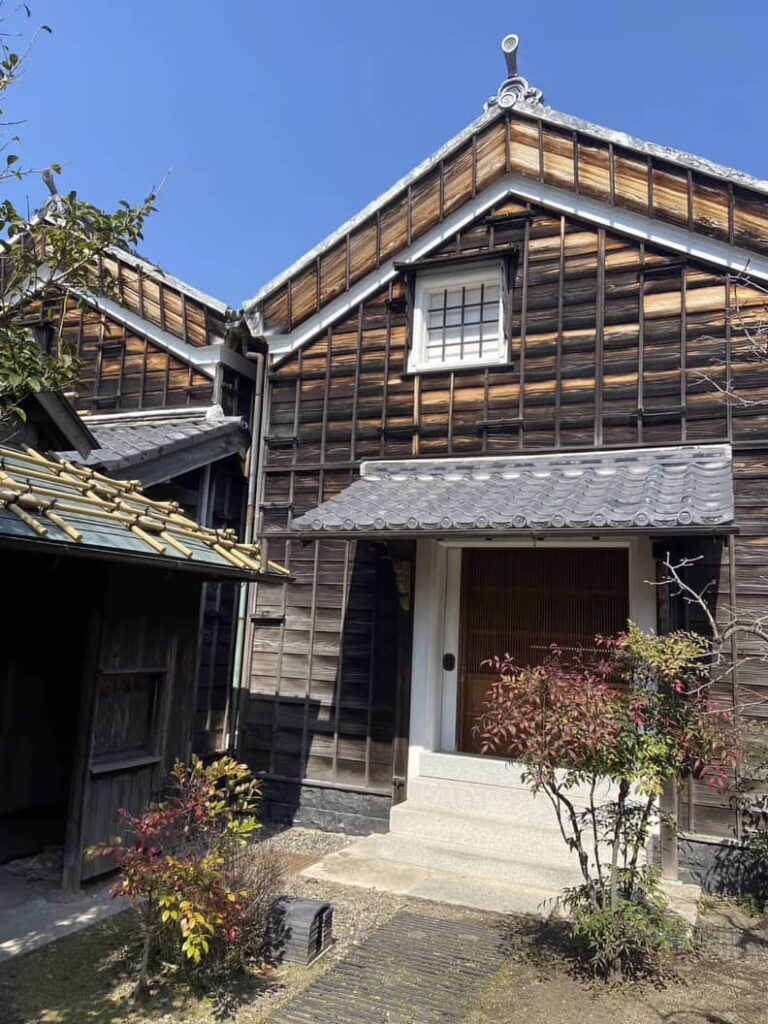
After departing from the Ise-Katagami Museum, I made my way to the Suzuka City Traditional Industry Hall. Conveniently situated within walking distance from Tsuzumigaura Station, the next stop after Shiroko Station, it seemed a bit far to reach directly on foot from the Ise-Katagami Museum. Thus, I opted to rent a bicycle.
The displays at the Traditional Industry Hall permitted photography, allowing me to share my observations. Among the exhibits, it was highlighted that there are four distinct carving techniques in Ise-katagami.
Kiribori is the oldest method of carving Edo komon, involving the creation of small holes by rotating a fine, semicircular carving knife with the left hand. The finest komon patterns boast up to 900 holes within a 3 cm square.
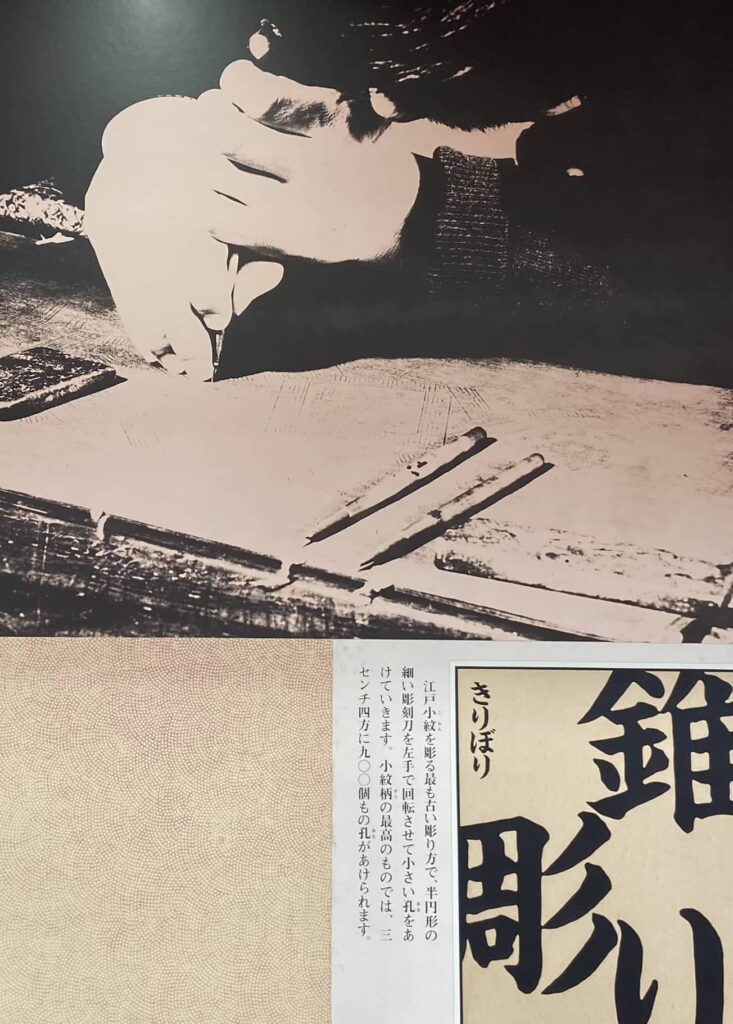
Edo komon is a type of Japanese stencil dyeing for kimonos that evolved from the Muromachi period (1336-1573) to the Edo period (1603-1868). Initially appearing as a solid color, it is intricately dyed using the precise and delicate technique of Ise-katagami.
Please take a closer look at the following picture. Can you see the pattern?
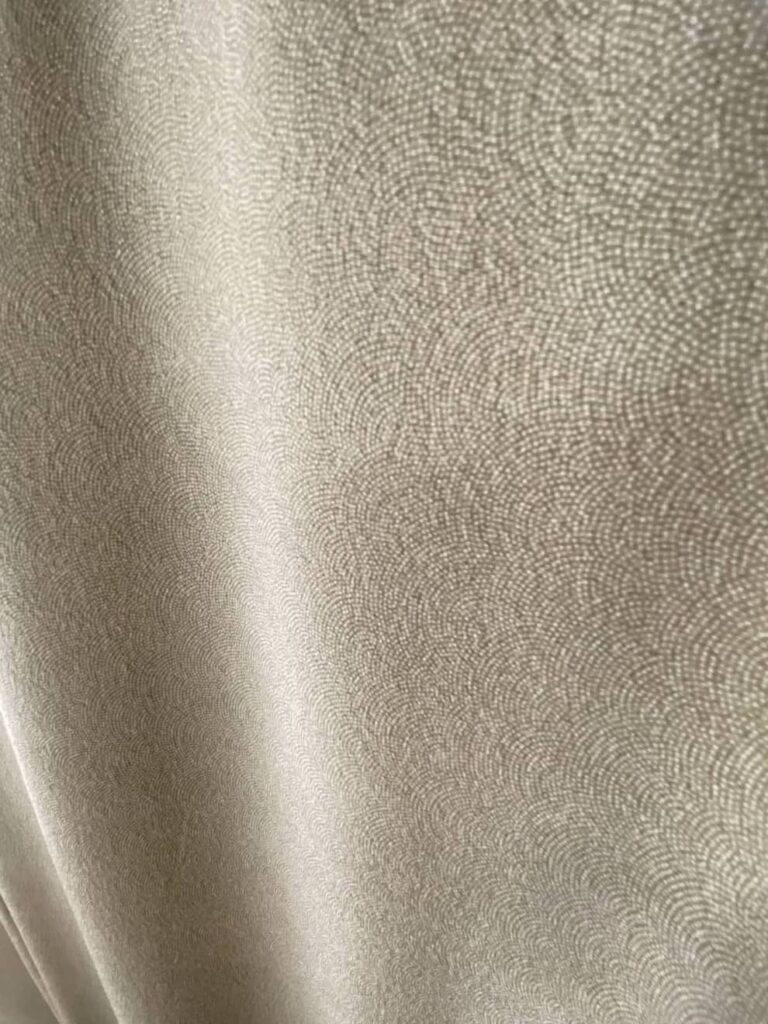
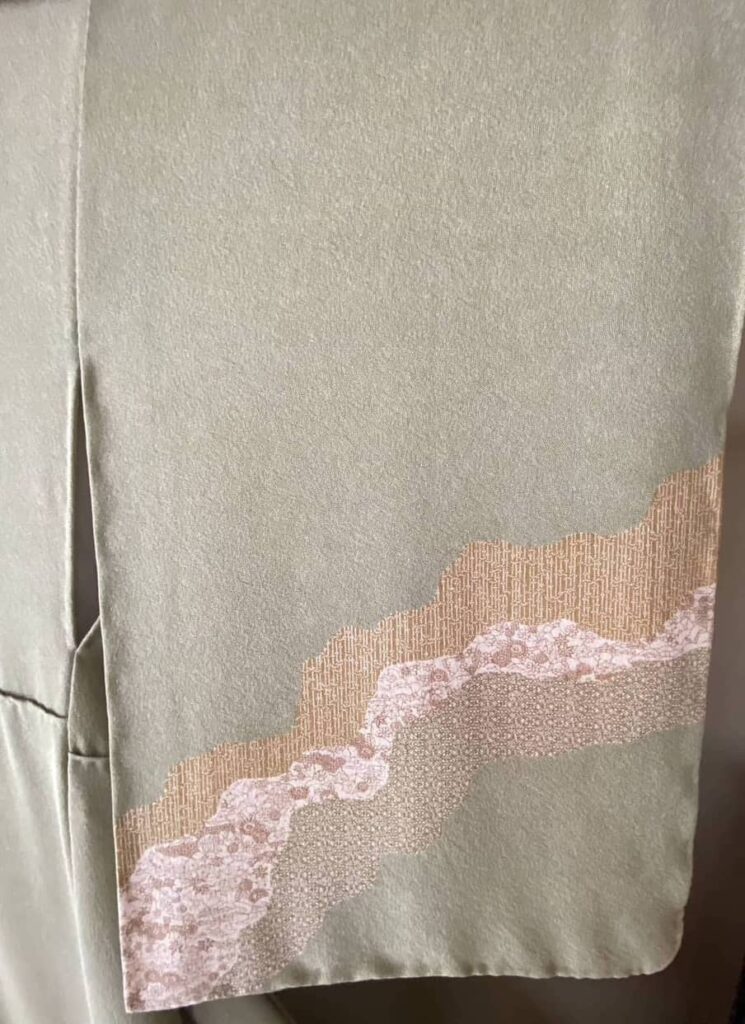
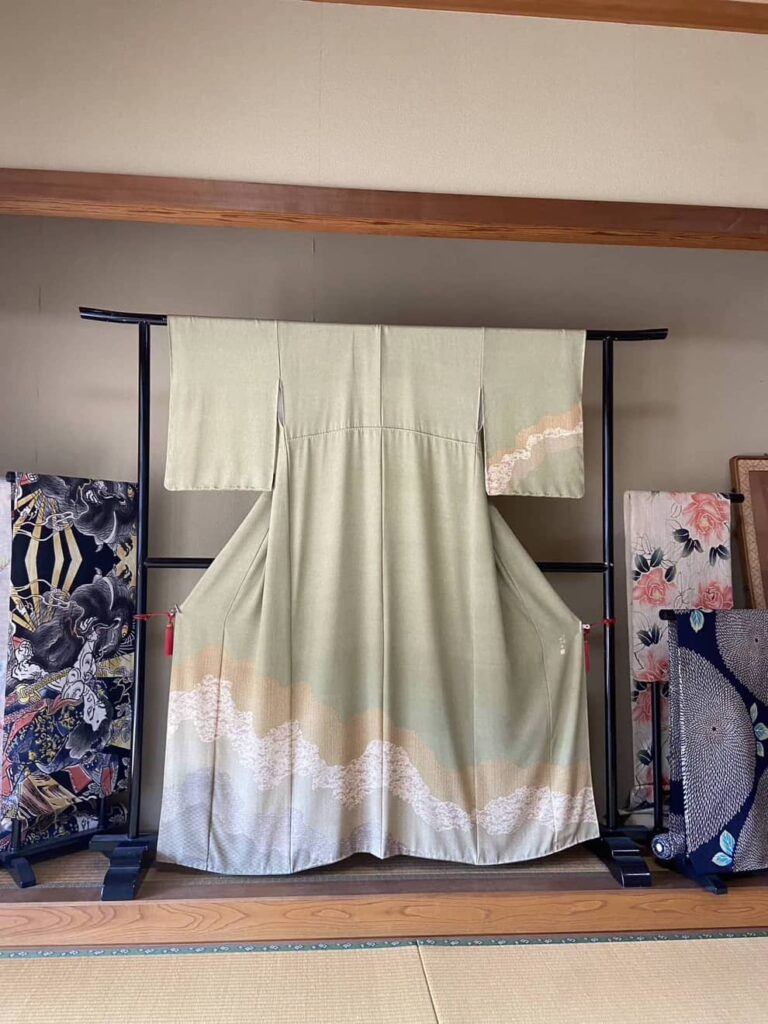
Hikibori:
The carving of even stripes in Edo komon is executed by holding a ruler in the left hand and a sharp carving knife in the right hand. The highest quality patterns feature as many as 31 stripes carved within a 3 cm width. These stripes are subsequently inserted into the fabric to prevent any movement during the dyeing process.
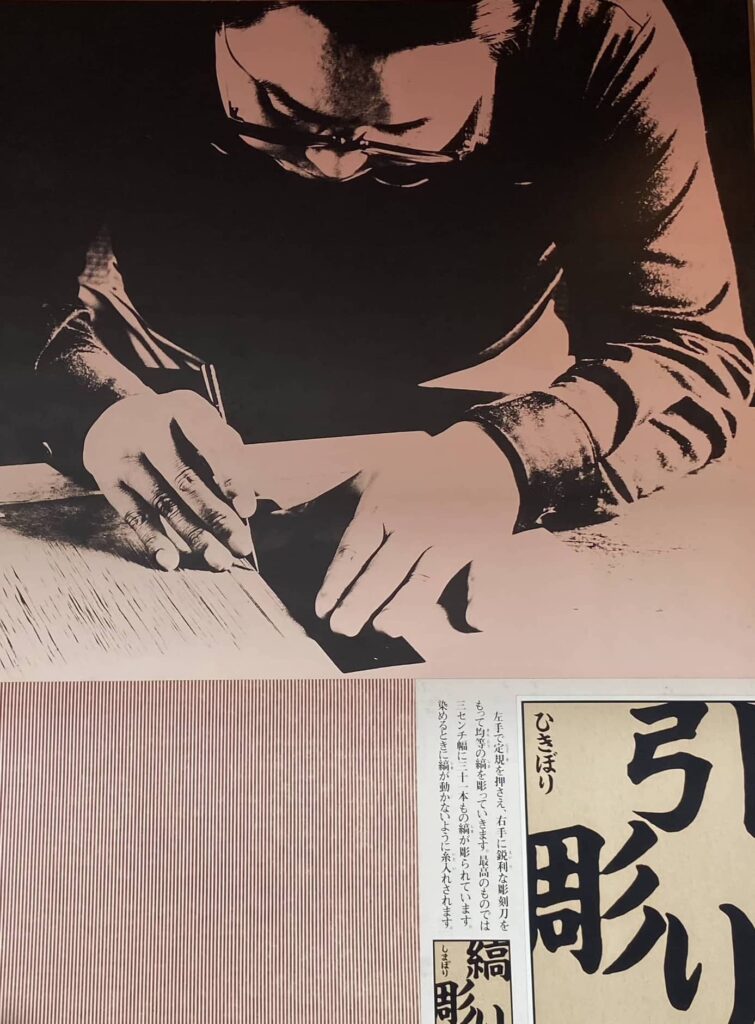
Tsuki-bori:
The handle of the carving knife is positioned against the right cheek, and the blade is adjusted with the left hand as it moves up and down. Using this technique, 7 to 8 pieces of katajigami are meticulously carved by piercing them onto the tsuki-board
The finished pieces are gauzed to strengthen the katagami.
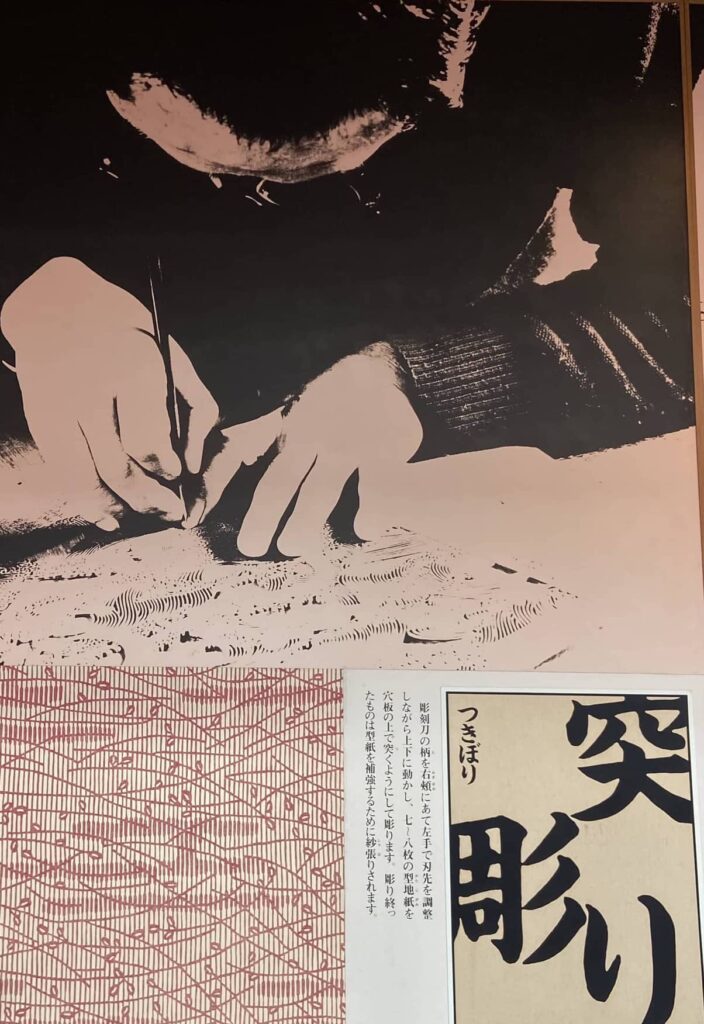
Dogubori
The carving knife itself is one element of the pattern, and the pattern is punched out by placing the thumb on the end of the handle and pressing down firmly to punch out the katajigami. Each engraver makes their own engraving knives.
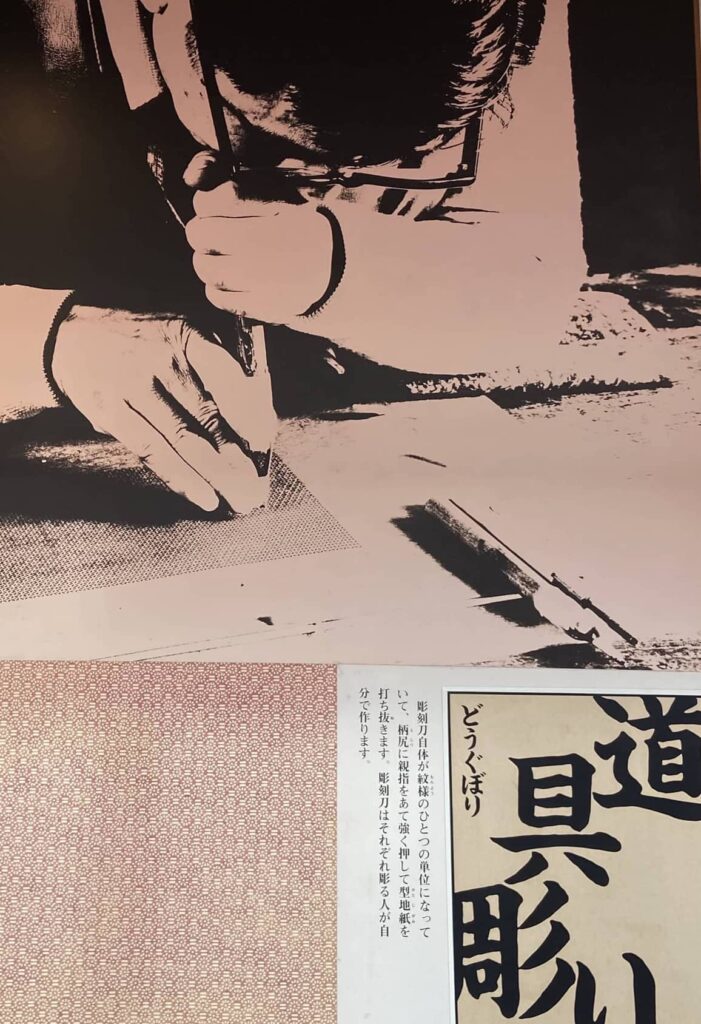
The above four techniques do not seem to mean that one person will use all of them to create a work of art. Typically, they master the path of each technique.
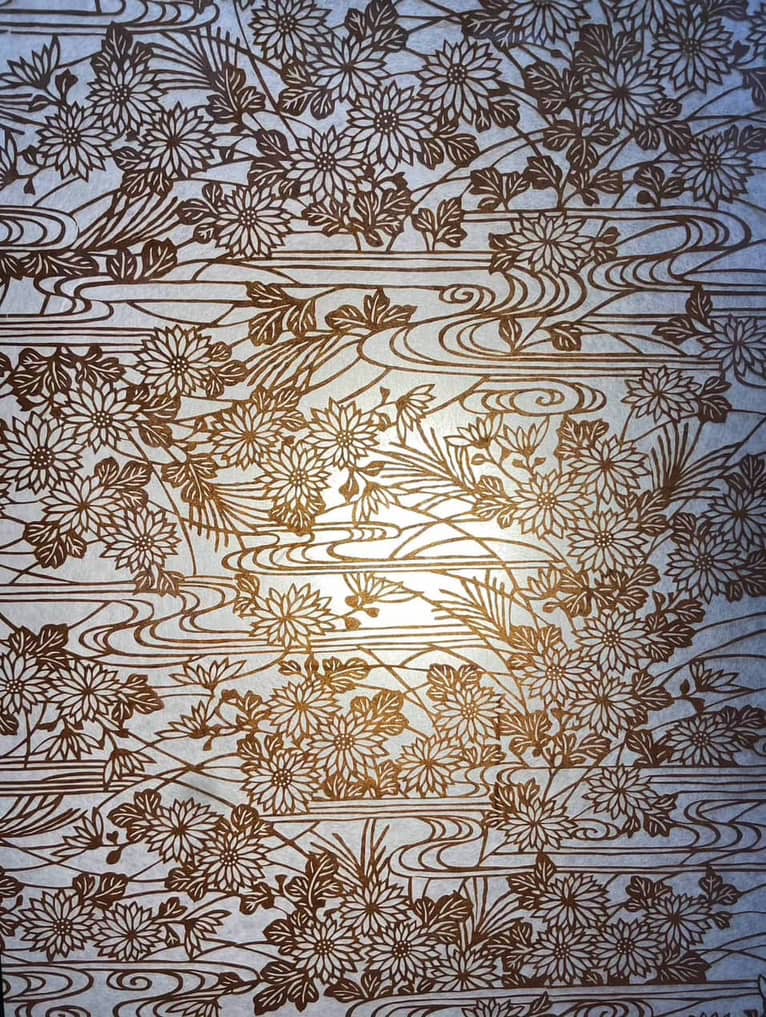
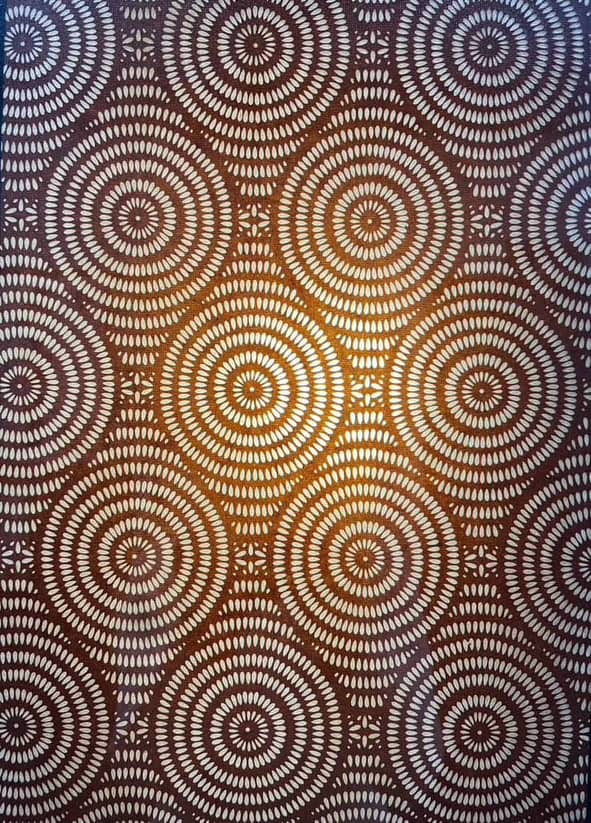
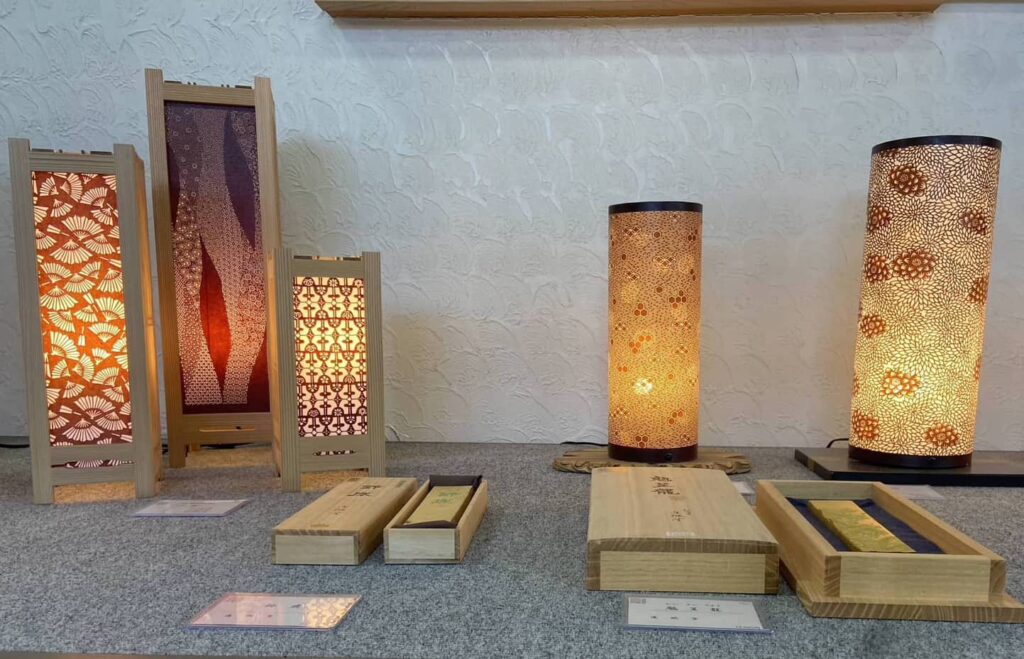
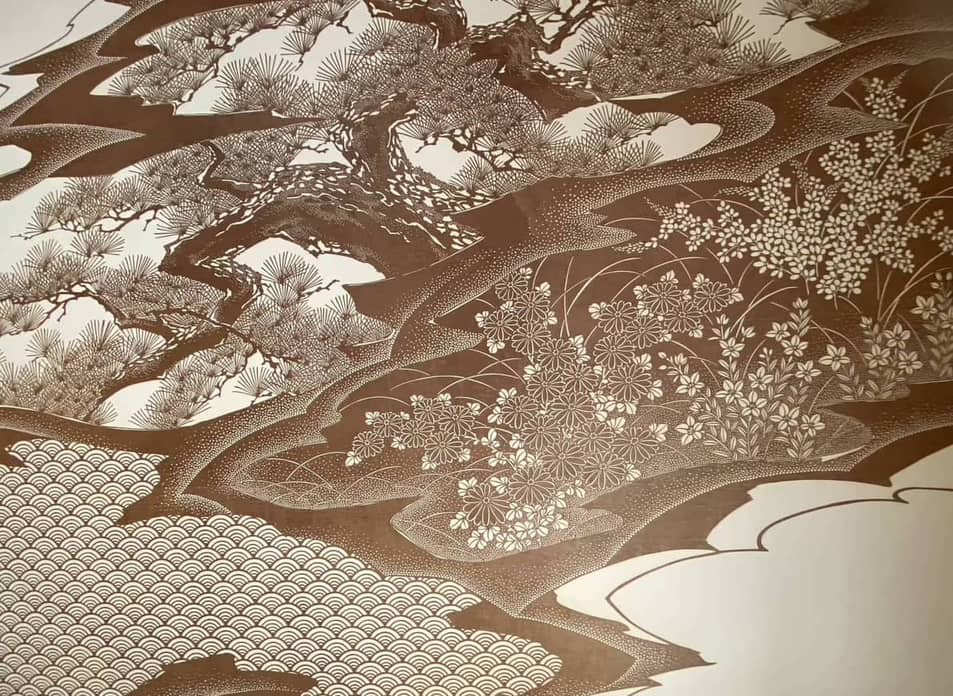
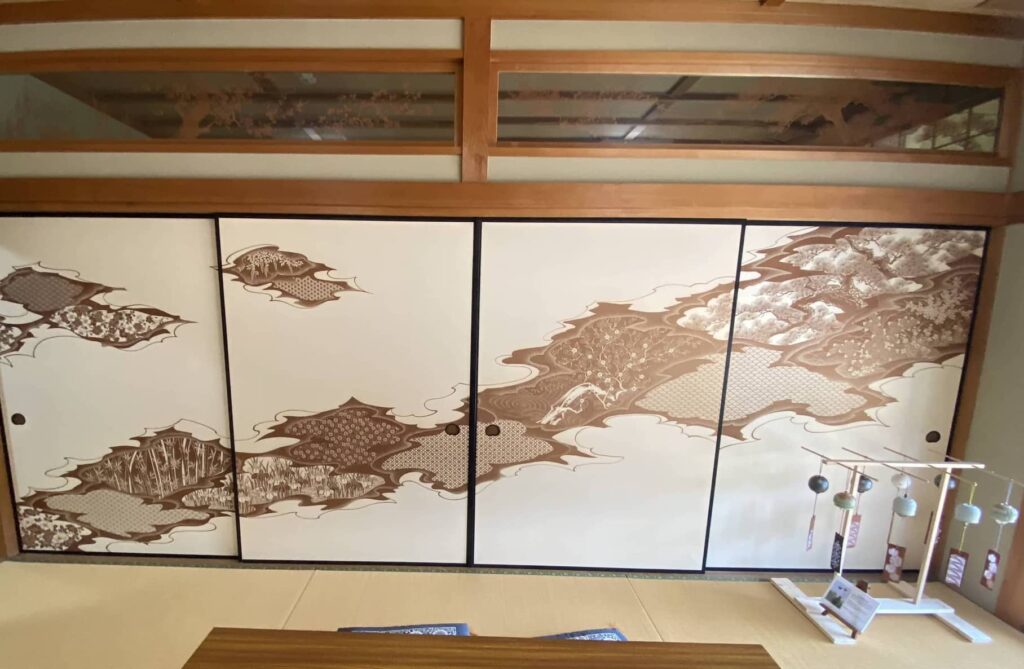
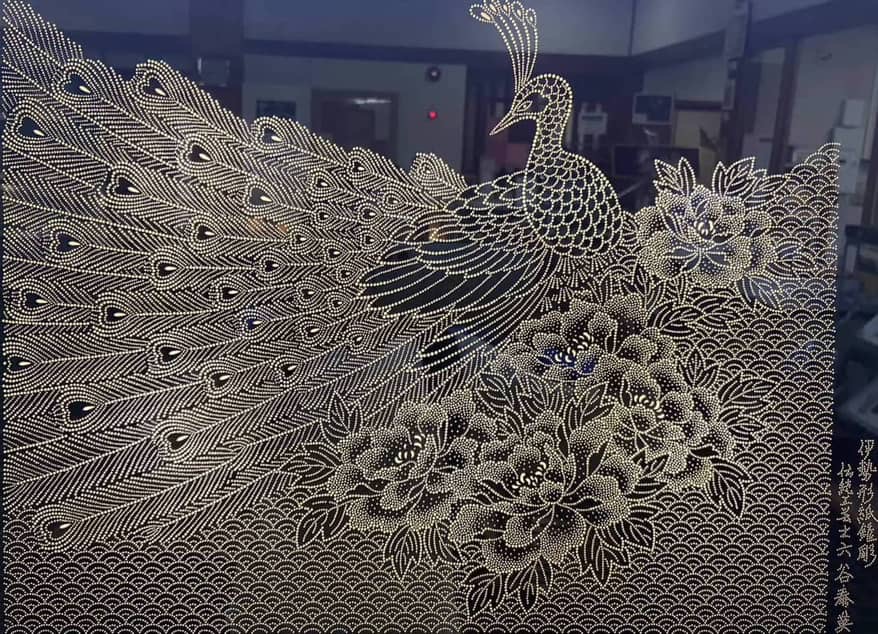
It is written “Ise-katagami kiribori, traditional craftsman, Yasuhide Rokutani”. It is my favorite work.
While I am unable to provide images of the exhibited works for sale, I was deeply impressed by Haruki Rokutani’s piece titled “Hisho” (Flight).
Additionally, the works of Masaaki Kimura and Isao Uchida left a strong impression on me. Both artists imbued their creations with a sense of dignity, showcasing their skilled techniques.
I had previously watched Keiko Nasu’s videos several times. She began her career in this field in 2010 after working as a designer. She has demonstrated her skills overseas in locations such as Hong Kong and Malaysia. Sadly, her master passed away suddenly in 2022, and she took over the studio as it was. This time, I was fortunate enough to visit her studio.
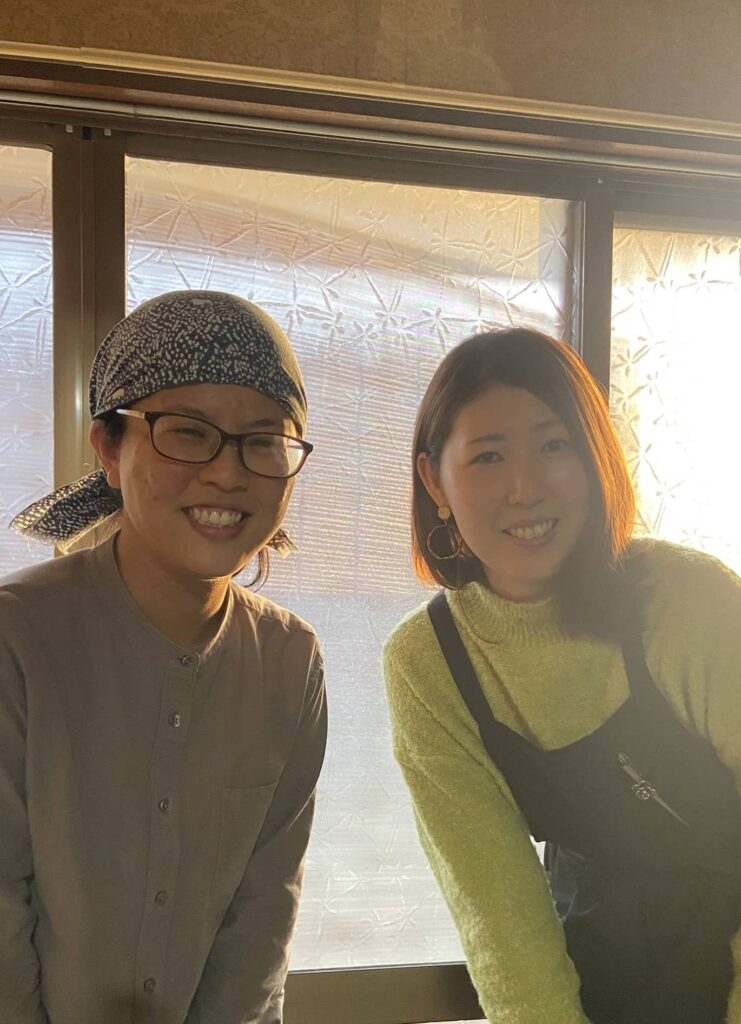
I also had the opportunity to meet Ms. Yoko Maruta, a younger colleague of Ms. Nasu from Shonan, Kanagawa Prefecture, during the visit. I expressed directly to her my desire for her to introduce Ise-katagami in Yamakita-Machi, also located in Kanagawa Prefecture.
My aspiration is to establish a venue in the Kanto region where people can experience Ise-katagami. I aim to provide opportunities not only for beginners but also for those who wish to delve deeper and pursue it earnestly through regular classes.
The Suzuka City Traditional Industry Hall is currently seeking students for the year. While I would like to participate, unfortunately, I am too far away to do so regularly. Nonetheless, I am eager to see such opportunities realized in the Kanto region as well.
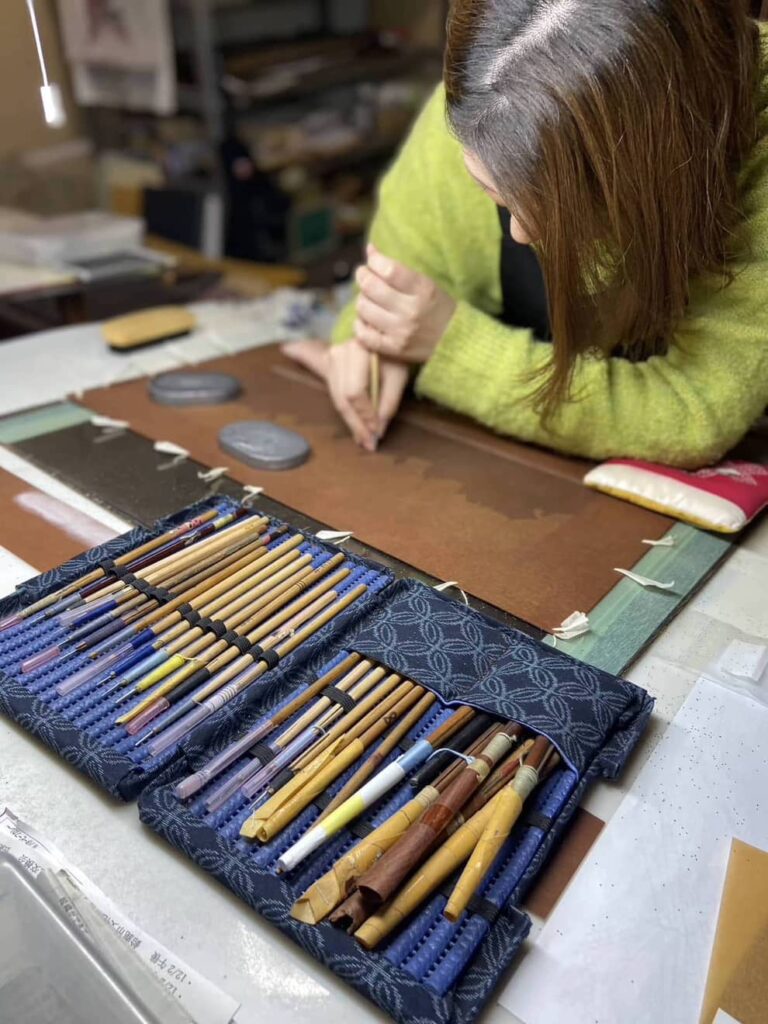
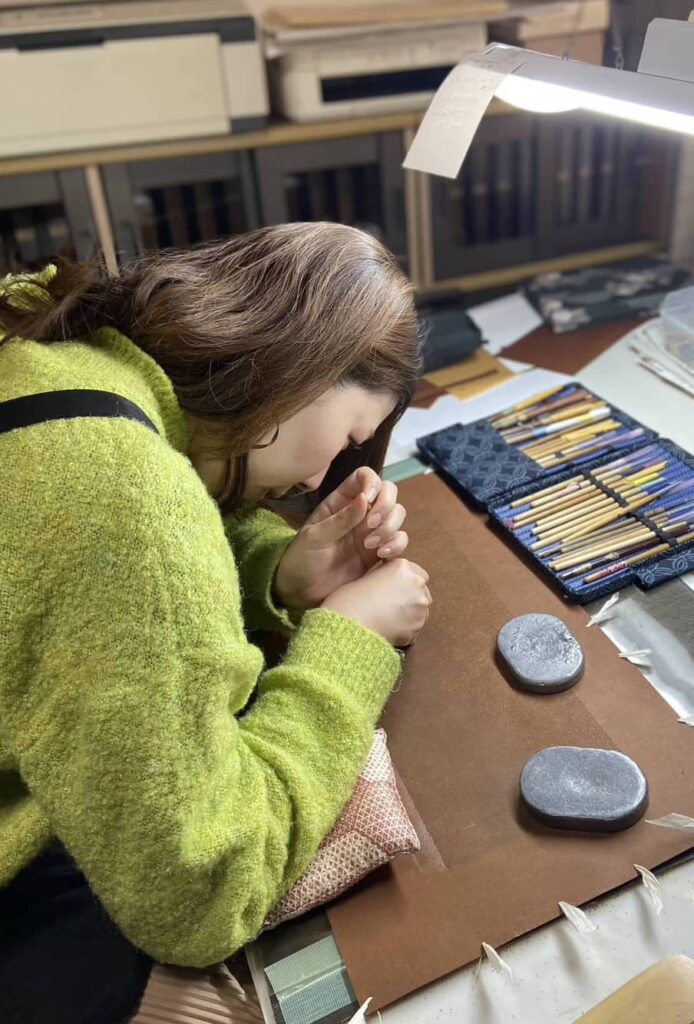
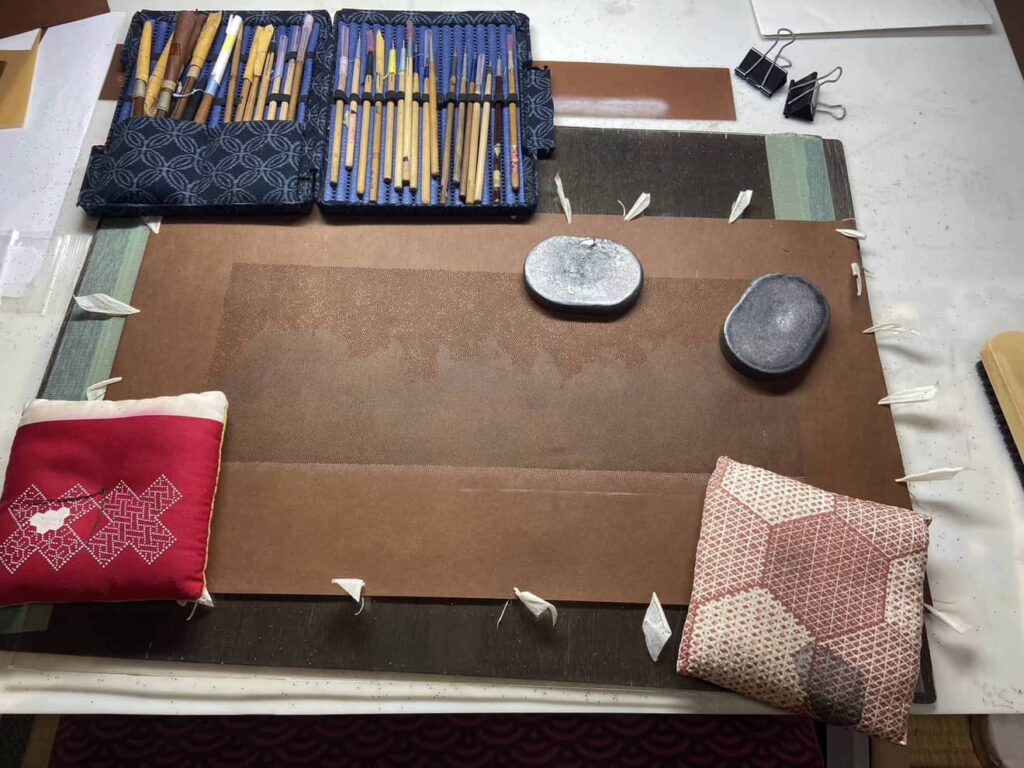
I would like to thank them very much for staying with us until late in the evening.
It was a very enjoyable time.
Ise-katagami boasts a history spanning over 1,000 years, traditionally used to adorn kimono fabrics with intricate patterns such as komon, yukata, and yuzen. It attained official recognition as a traditional craft by the Minister of International Trade and Industry in 1983.
Proof of handmade craftsmanship that takes pride in tradition:
Traditional crafts designated by the Minister of International Trade and Industry that bear the traditional stamp are said to meet the above criteria.
I am one of those who are fascinated by the beauty of Japanese traditional crafts.
They are more like works of art than crafts. While modern art holds its allure, the serene charm of traditional crafts, crafted with meticulous traditional skills, holds a special place in their hearts.
The beauty of traditional crafts lies in their simplicity and their ability to enhance the everyday. They infuse our daily lives with a sense of richness and spiritual depth.
As dyeing stencil katagami paper, it must have the properties of strong, non-stretchable paper. In order for Isekatagami washi to achieve such properties, it is used in a process that takes many months.
Today, machines can efficiently produce almost anything, leading some to believe that patterns such as Ise-katagami should be created by machines as well.
Originally, Ise-katagami was crafted as a pattern for dyeing kimono and other fabrics. This traditional technique persists today for dyeing various textiles, including hand towels. For dyeing artisans, hand-carved Ise-katagami remains an integral aspect of their craft. It is widely believed that machine-made stencils cannot match the accuracy, detail, and beauty of handcrafted ones.
There has been a misconception that machines surpass humans in terms of precision and accuracy. While machines may increasingly replace humans in various fields in the future, we must never forget the value of creations made by human hands, regardless of the changes brought by time.
It was a profoundly enriching experience for me to directly perceive the delicate and rhythmic movements of numerous artworks.
I am captivated by the repetition of the same movement, finding it truly fascinating.
Music, for instance, is crafted by layering various sounds in a repetitive rhythm, creating expression. Similarly, in folk dances and Japanese traditional bon dances, the repetition of movements to the same rhythm generates a unique energy—a sense of unity.
The Earth, alongside other planets, moves in a precise and beautiful rhythm. It’s a rhythm that resonates throughout the universe.
While some may perceive it as an exaggeration to claim feeling the rhythm of the universe through Isekatagami, for me, it was an emotional journey to sense the ultimate beauty crafted by human hands.
Machines, in their precision, cannot capture such expressions. The subtle nuances achievable only through human hands are a testament to the irreplaceable essence of human creativity. We must cherish and preserve what is truly precious to us.
